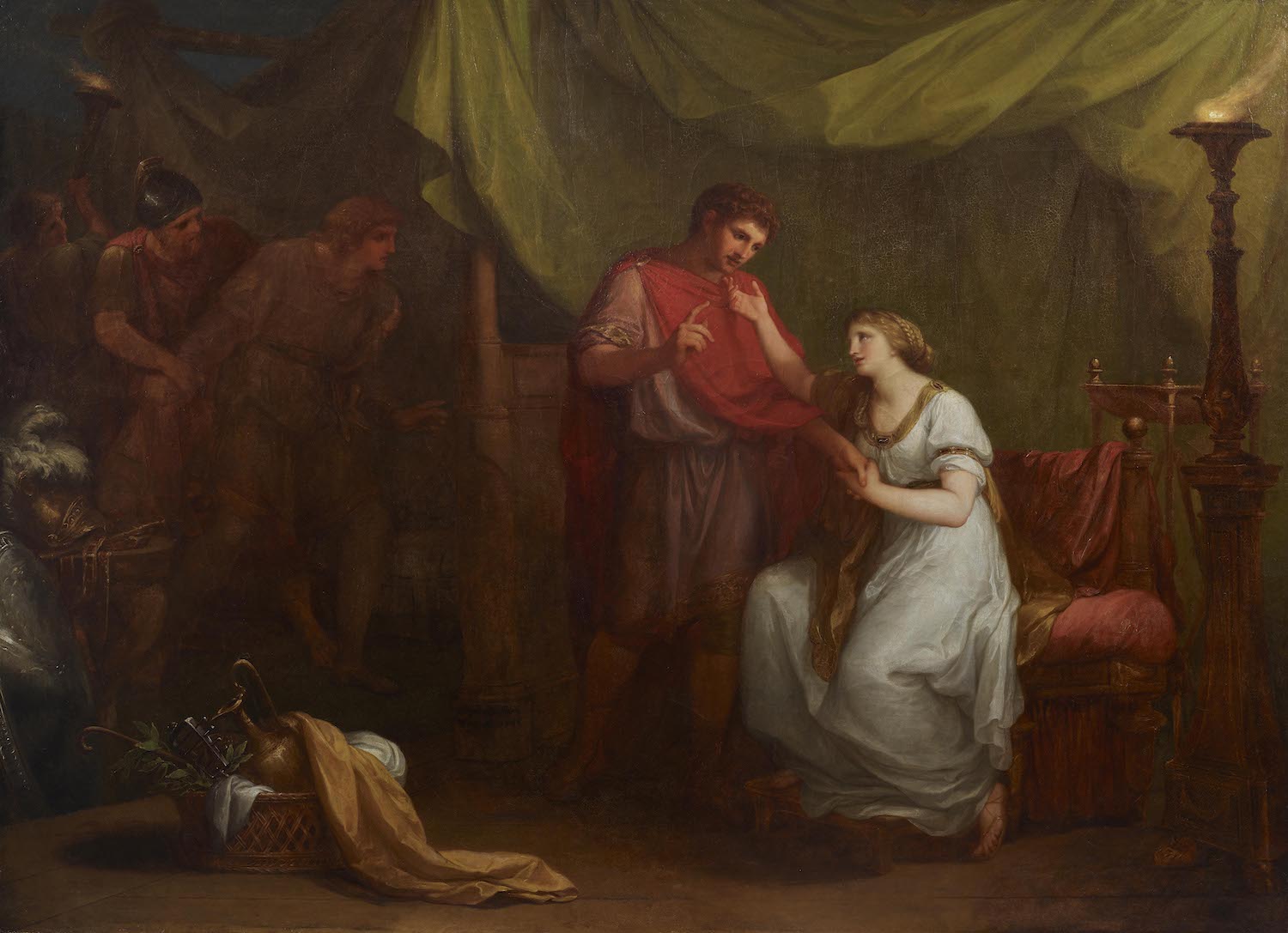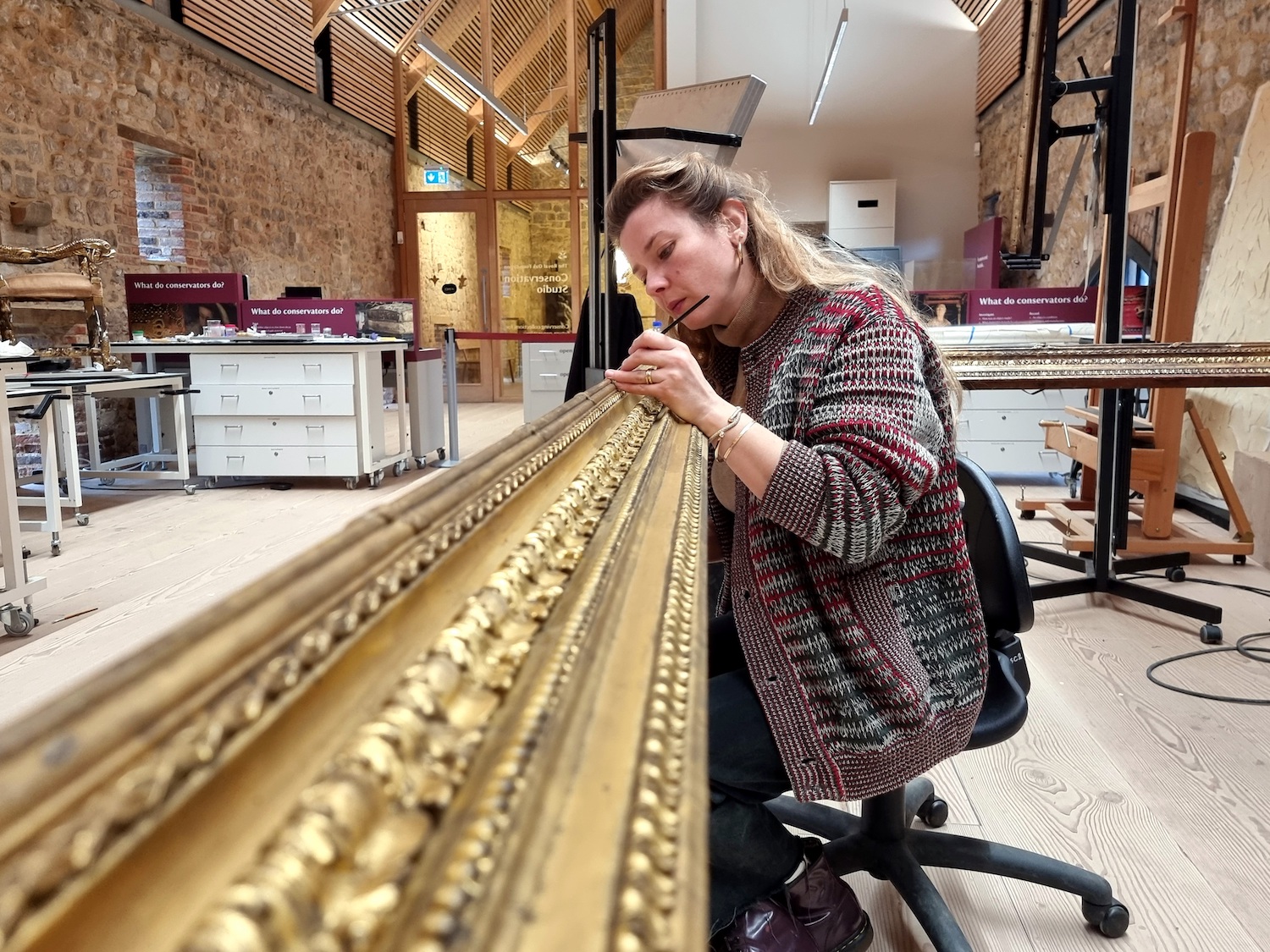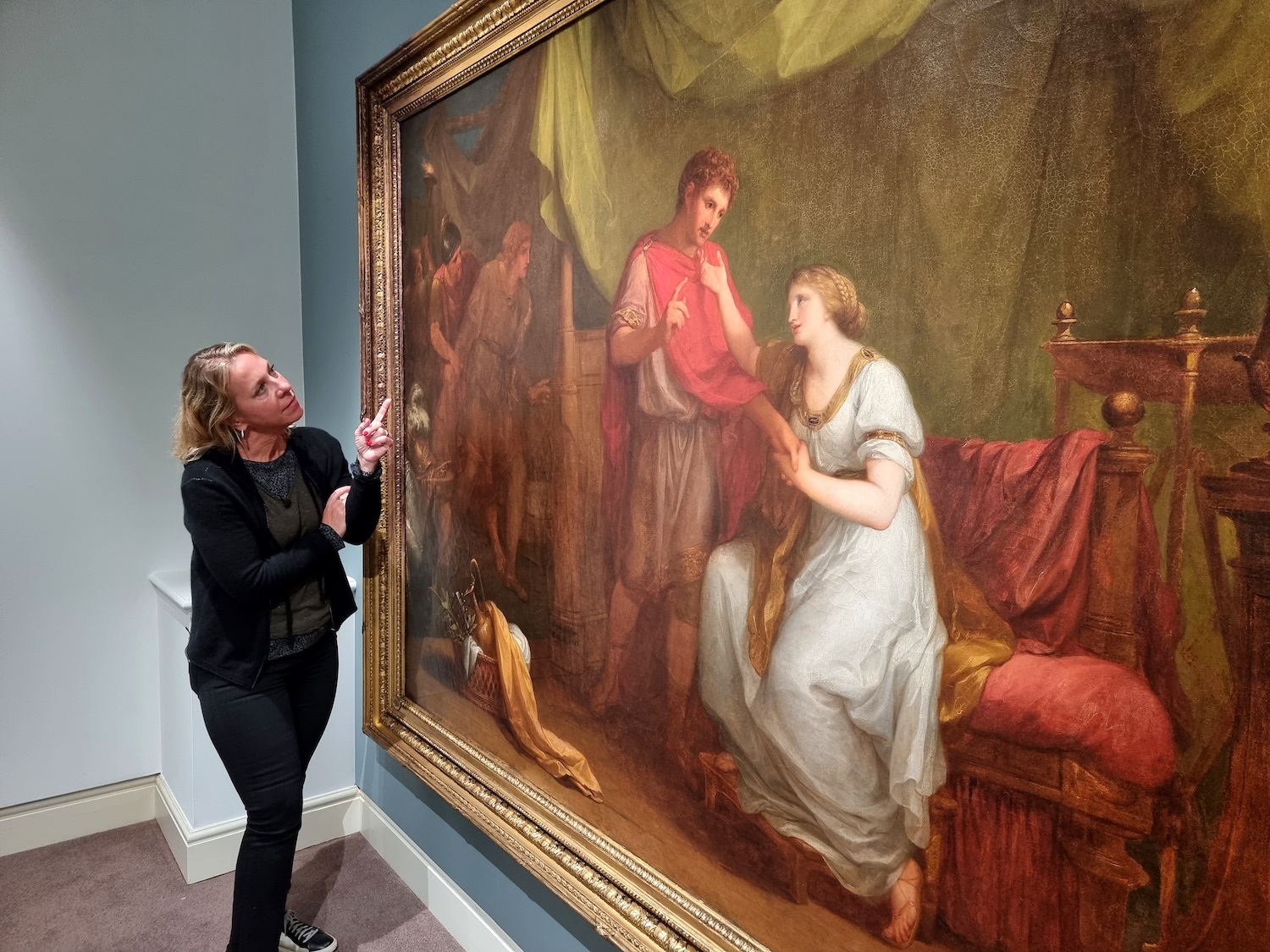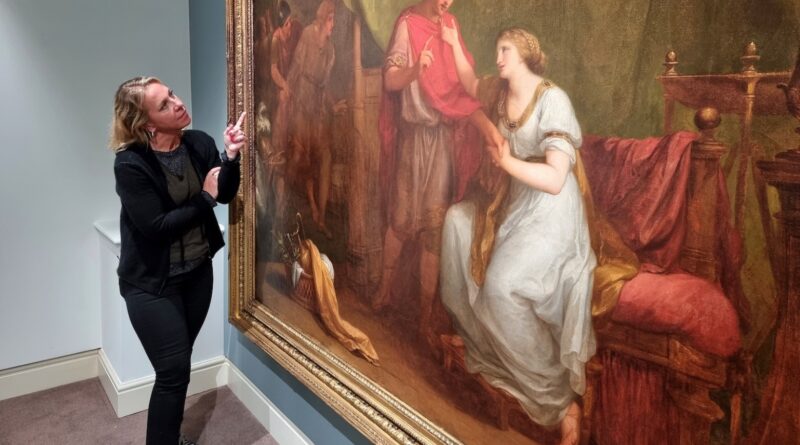Angelica Kauffman painting conserved at Petworth House

A new display at the National Trust’s Petworth House in West Sussex reveals fresh discoveries about a painting by one of the 18th-century’s most important artists.
Conserving Kauffman sheds new light on Angelica Kauffman’s Diomed and Cressida (1788), from its conception through to a major conservation project that has brought the artwork back to life. It uncovers secrets that have lain hidden beneath the painting’s surface until now and explores the fascinating world of art conservation.

Display cases of tools and materials together with a new film disclose the painstaking assessment, research and treatment undertaken during the painting’s recent conservation process, alongside historical detail about Kauffman and the Shakespeare Gallery where the painting was originally shown.
The use of infrared reflectography during the conservation process revealed a magnificent underdrawing beneath the paint – the first time this has ever been seen. The detailed drawing, most probably charcoal, also uncovered a grid, suggesting that the artist was scaling up a smaller preparatory sketch.
About Angelica Kauffman
Angelica Kauffman was one of the most celebrated artists of her age. One of only two female founder members of the Royal Academy, she was known for her celebrity portraits and history paintings, pioneering a new approach to the genre by placing the female protagonist at the heart of the composition.
A hugely significant painting in Petworth’s world-class collection, Diomed and Cressida depicts a scene from William Shakespeare’s Troilus and Cressida. It was commissioned by the publisher John Boydell for exhibition in his newly opened Shakespeare Gallery in London, a project he initiated to improve the reputation of British history painting and to capitalise on the swell of interest in Shakespeare at this time.
In the painting, the Trojan prince Troilus is standing in the shadows overhearing his lover Cressida promise herself to his enemy the Greek warrior Diomedes. The scene is filled with tension as we see this love triangle played out between three key characters in the play.
Conservation work
Dr Emily Knight, Property Curator at Petworth explained: “Before conservation, the painting was very hard to read due to layers of discoloured varnish and cracked paint. The transformation eight months later is extraordinary. What we see now is so much closer to what Kauffman intended.

“The use of infrared has allowed us to see under the surface of the painting and observe the artist’s working process. Kauffman probably created a preparatory sketch, which she then scaled up on the canvas with the help of a grid. It’s amazing to see her fluid and expressive underdrawing for the first time.
“Kauffman is this groundbreaking artist who built an incredible career at a time when it was hard for women to become professional artists. It’s wonderful to have this painting back at Petworth for our visitors to enjoy, and where we can shine a light on the incredible work of our conservators.”
The painting was treated by independent paintings conservator Sophie Reddington: “This must be one of the most rewarding projects I’ve worked on,” she said. “It was wonderful to gradually uncover little brushstrokes that have been hidden for decades, along with so many other ‘lost’ details – the jug, the shield, the helmet. The process has restored the vibrancy of the original paint colours and I really felt I was bringing the painting back to life; that I was awakening an old master. The discovery of the underdrawing was also a very exciting moment; it’s so beautiful and dramatic, with a great sense of energy.”

Senior National Trust Conservator Rebecca Hellen added: “The 18th century onward can often challenge paintings conservators more than other periods because artists began to buy paints from Colourmen. These were companies who manufactured and supplied artists’ materials but with different concentrations of oils, resins, and driers, which caused both immediate and long-term problems. Kauffman was painting at a time when drying cracks were common in paint surfaces, and these are the areas of a painting that can test even the most seasoned conservator.”
The painting’s original neoclassical livery frame also underwent conservation treatment. Conservator Jonida Mecani, formerly from the National Trust’s Royal Oak Foundation Conservation Studio at Knole in Kent reinstated missing decoration, re-gilded the frame and carried out pigment analysis of a mysterious red paint on the frame.
Conserving Kauffman is at the National Trust’s Petworth House and Park from 10 June to 24 November, normal house admission charge only. For more information: https://www.nationaltrust.org.uk/visit/sussex/petworth/conserving-kauffman-spotlight-display

